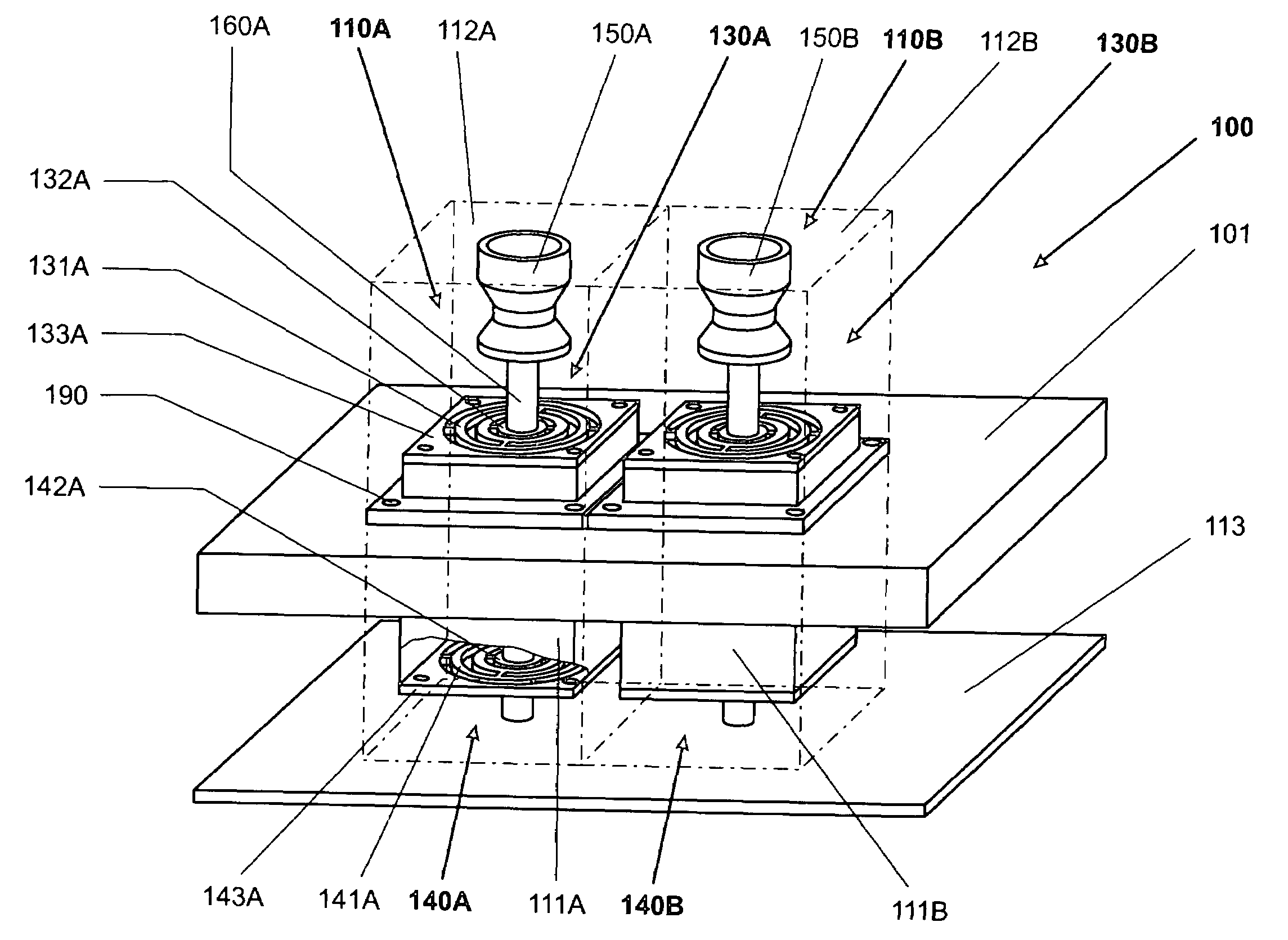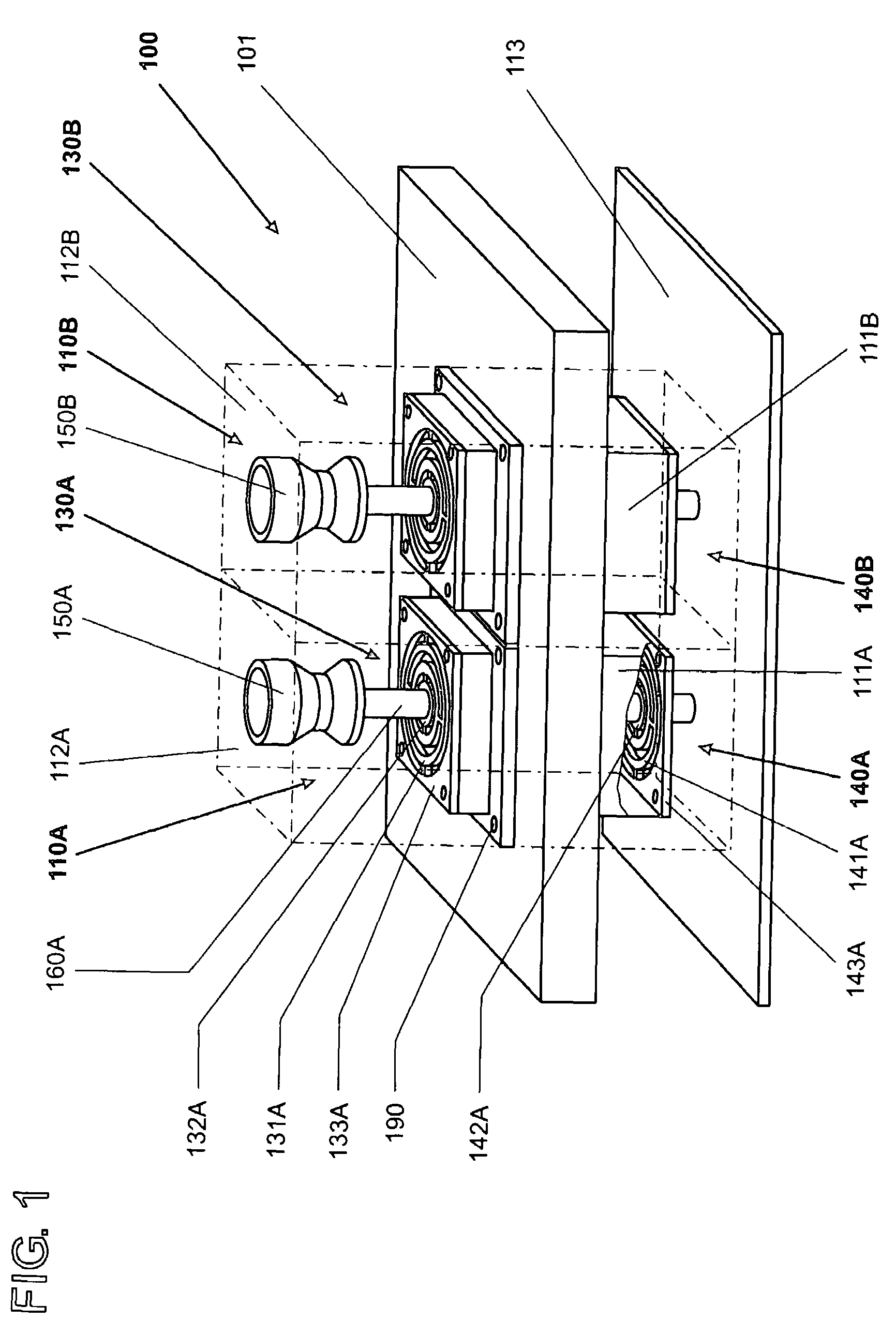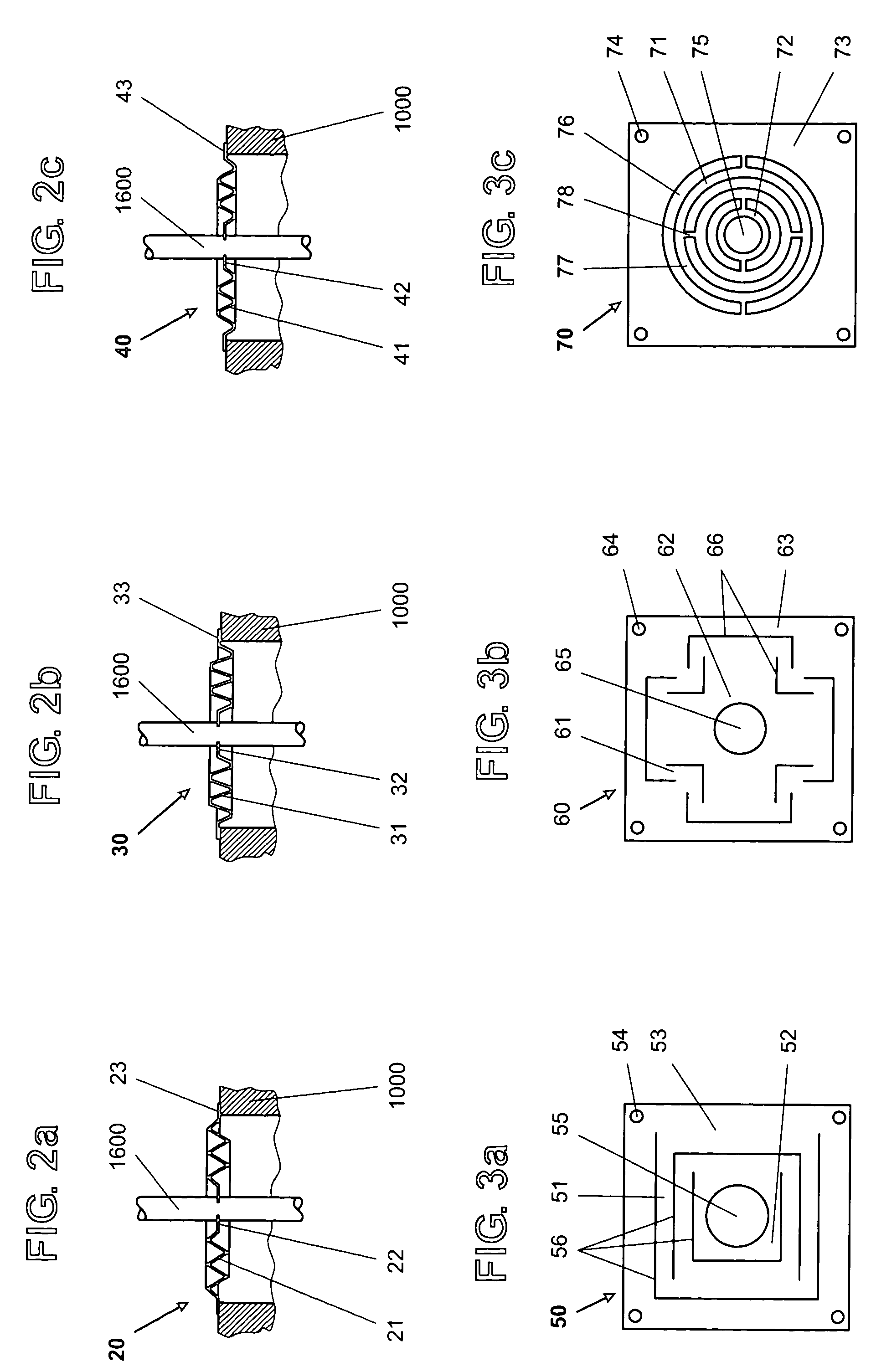Parallel-guiding mechanism for compact weighing system
a guiding mechanism and compact technology, applied in the field of weighing modules, can solve the problems of limiting the thickness of thin flexure joints, weighing cells based on electromagnetic force compensation, and weighing cells based on strain gauge principles, so as to increase the bending stiffness of a very thin stationary parallel leg and increase the bending stiffness of the sheet metal part. , the effect of increasing the bending stiffness
- Summary
- Abstract
- Description
- Claims
- Application Information
AI Technical Summary
Benefits of technology
Problems solved by technology
Method used
Image
Examples
Embodiment Construction
[0058]In the perspective representation of FIG. 1, an exemplary receiving structure 101 is shown with two weighing modules 110A, 110B, together constituting an exemplary device 100 for the weighing of substantially uniform objects. Each of the weighing modules 110A, 110B has a weighing cell 111A, 111B with a load receiver 150A, 150B. Each of the weighing modules 110A, 110B is arranged within a design space 112A, 112B. Each dimension of a design space in the plane that extends orthogonal to the load direction is delimited by the design spaces occupied by the neighboring weighing cells or represents the largest dimension of the weighing cell 111A, 111B in said plane within the respective design space 112A, 112B. The dimension in the load direction is delimited for example by a housing floor 113 that is solidly connected to the receiving structure. The limits of the design spaces 112A, 112B against the load direction are formed, e.g., by the upper rims of the load receivers 150A, 150B,...
PUM
 Login to View More
Login to View More Abstract
Description
Claims
Application Information
 Login to View More
Login to View More - R&D
- Intellectual Property
- Life Sciences
- Materials
- Tech Scout
- Unparalleled Data Quality
- Higher Quality Content
- 60% Fewer Hallucinations
Browse by: Latest US Patents, China's latest patents, Technical Efficacy Thesaurus, Application Domain, Technology Topic, Popular Technical Reports.
© 2025 PatSnap. All rights reserved.Legal|Privacy policy|Modern Slavery Act Transparency Statement|Sitemap|About US| Contact US: help@patsnap.com



